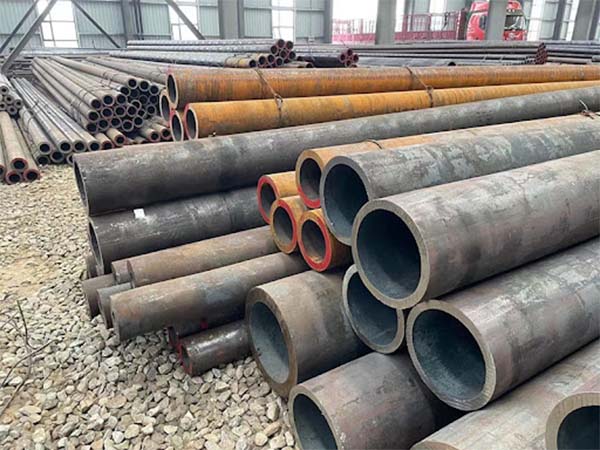Alloy steel pipes are widely used in application environments such as chemical engineering, petroleum and natural gas, boilers and high-pressure equipment, which require high corrosion resistance, high temperature resistance and high strength. With its excellent mechanical properties and chemical stability, it has become an indispensable material for transportation and support. It can meet the demands of various working conditions such as long-distance high-pressure transportation, heavy-duty mechanical structures, and the transportation of complex chemical media.
Below, I will introduce in detail the typical manufacturing process of alloy steel pipes from raw material preparation to finished product inspection for everyone

Selection and pretreatment of raw materials
High-quality alloy materials are selected. Alloy pipes are composed of a variety of metals. Different choices of metal materials result in different properties of alloy steel pipes. Common metals include steel, aluminum, titanium, etc., and common alloying elements include chromium, molybdenum, nickel, etc. Purchase according to the product standards to ensure that the chemical composition meets the design requirements.
The selected metals and alloy materials are smelted and refined. The refined alloy liquid is then poured into ingots or directly continuously cast into billets for subsequent hot working.
Forming process
Alloy steel pipes can be classified into two major categories based on their manufacturing processes: seamless pipes and welded pipes. The manufacturing processes of the two are different.
Seamless alloy steel pipe
Heating and perforation
Heat the round billet to about 1200-1250 ℃, and then drill a hole in the middle of the billet with a punching machine or hot forging hammer to form the initial tube billet.
Hot rolling or hot extrusion
After multiple passes of rolling (or extrusion) in a hot rolling mill (such as a three-roll mill or a four-roll mill) or a hot extruder, the tube billet is gradually rolled into a hot-rolled mother tube with a specified outer diameter and wall thickness.
Sizing and rough machining
Heat the main pipe with a sizing machine and then roll it for sizing to improve dimensional accuracy. Or rough machining can be carried out using a hot drawing tube machine.
Welded alloy steel pipe
"Forming"
The steel strip or steel plate is straightened and coiled, then sent into the forming machine to be stamped into a U shape, and then closed into a pipe through multiple roller forming processes.
Welding
High-frequency welding (HFW) : Through high-frequency induction heating, the weld seam of the tube billets is melted and immediately pressed to form the shape.
Submerged arc welding (SAW) : Welding wire and flux are simultaneously fed into the inside and outside of the pipe to form a double-sided weld seam on both the inside and outside. It is suitable for pipes with relatively thick walls.
Weld shaping and heat treatment
After welding, heat treatment (normalizing or annealing) is carried out on the weld seam to eliminate welding stress and ensure uniform structure and properties.
Heat treatment and cold working
Heat treatment is carried out on the formed steel pipes to eliminate their stress and enhance their strength and toughness.
Normalizing/normalizing and tempering: Improve grain size and comprehensive mechanical properties;
Quenching and tempering (quenching + tempering) : It enhances strength and toughness and is often used for high-strength alloy pipes.
Straightening and fixed-length cutting
The bends are removed by straightening machines and then cut to the specified length using cutting equipment such as sawing or plasma cutting.
Inspection and quality control
Size and appearance inspection
Measure the dimensions with calipers, inner and outer diameter probes, wall thickness gauges, etc. Visual or automatic optical inspection of surface defects.
Non-destructive Testing (NDT
Ultrasonic flaw detection (UT) : Detecting internal cracks, slag inclusions, etc.
Magnetic particle inspection (MT) : Detecting surface and near-surface defects;
Eddy current testing (ET) : It is used for thin-walled or small-diameter tubes.
Re-examination of mechanical properties and chemical composition
Tensile, yield strength, hardness and impact tests;
The content of alloy elements was rechecked by a chemical composition spectrometer.
Surface treatment and packaging
Surface protection
Hot-dip galvanizing or cold galvanizing can be adopted to enhance the corrosion resistance of steel pipes, or treatment methods such as painting or sandblasting can also be used.
Identification
Spray codes on the pipe end or pipe body, marking specifications, standards, grades, production batch numbers, etc.
Packaging and Shipping
Bundle them by length or pack them in wooden cases, adding spacers inside to prevent impact damage to the steel pipes.
Conduct a final visual inspection before leaving the factory to ensure that the packaging is intact.
